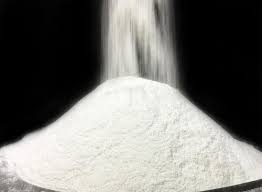Raw Talcum Powder

Highlights
- Color Snow White
- 300-500 N
- 92-98% Whitness
- Smooth & Silky Texture
- Available in 25kg bags

















PHYSICAL PROPERTIES:








TALC POWDER/SOAPSTONE POWDER
GRADE | WHITENESS (in %) | Industry |
GRADE – A | 90% to 95% | Pharmaceuticals and Cosmetics |
GRADE – B | 85% to 90% | Superior grade paper, Textile, Ceramics |
GRADE – C | 78% to 85% | Paper inferior grade, Paint, Rubber, Plastics and Detergent |
GRADE – D | 78% and below | DDT |
Talc is a rock known as magnesium silicate or soapstone, which is composed of varying proportions of the mineral talc, often combined with other minerals such as chlorite and carbonate. Talc is an industrial raw material in powder form, which is used in a wide range of applications

USES OF TALC POWDER
For Pharmaceuticals:
Magnesium silicate when hydrated is most commonly known as “Talc”. In the pharmaceutical industry, talc is used primarily as a glidant to improve powder flow in tablet compression.
For Plastics:
Our talc is used as a filler in plastic industry due to its various useful purposes. The talc extracted here has a higher resistance to heat which reduces shrinkages in plastics by increasing its heat resistance. Also it provides stiffness to polypropylene, polyester, vinyl, etc.
For Paints:
Due to platy structure of talc extracted here it is quite helpful for paints. When the paint is applied and the water evaporates the mineral substances remain on the wall. Also the brightness level of talc extracted is high which is good for any kind of paint.
For Paper:
It is well known that the paper industry is a huge consumer of talc powder. But due to less abrasion levels in talc it is a much healthier option for paper industries.
For Rubber:
As the talc here has high resistance to heat and has good abrasion indexes it is preferred in rubber industries over the world.
For Ceramics:
A low iron content(<0.5%), heat resistance and other notable factors it is used in ceramics because after heating the possibility of black particles to be visible is lesser in talc here.
For Cosmetics:
Talc extracted here is bacteria free and poses no health hazards to skin. It is smooth, glossy and lusturous. It is fluffy when converted to powder form. Also impurities such as calcium and alumina are absent which makes it most suitable for cosmetics when applied on skin.
